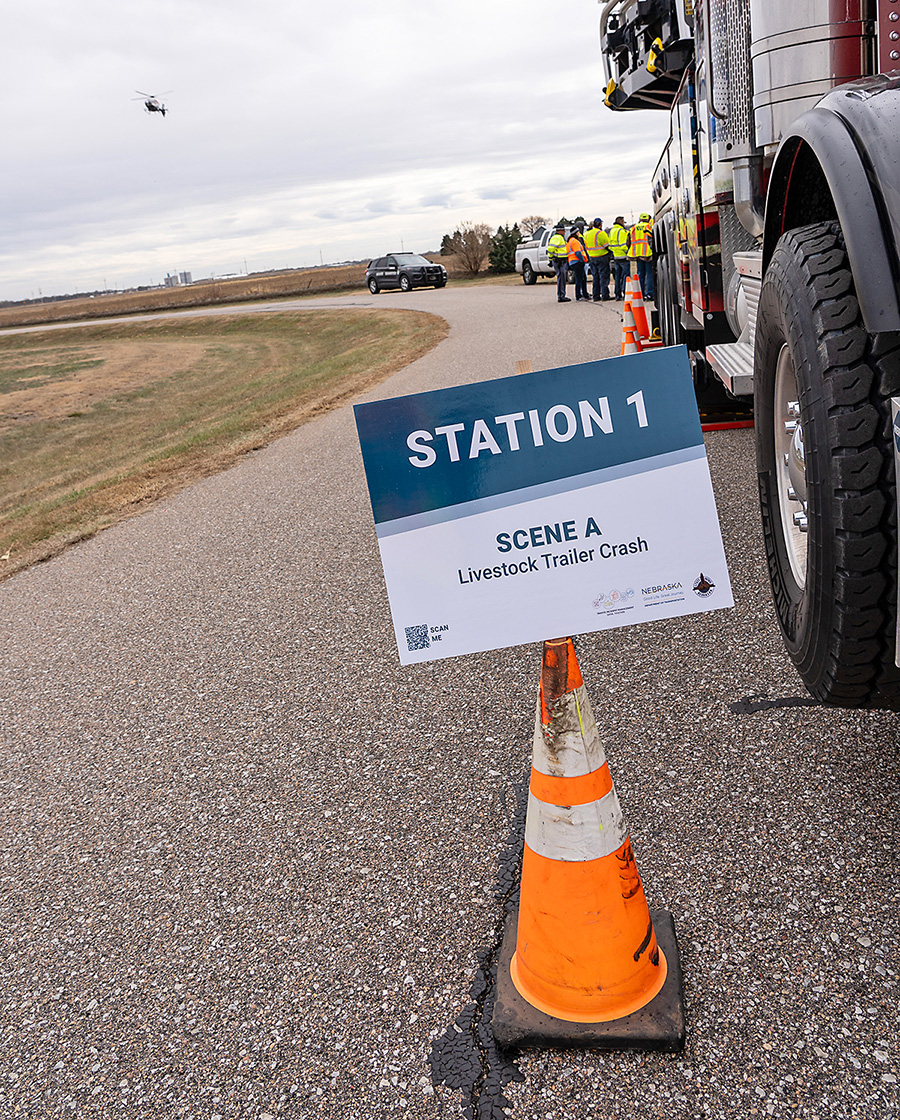
States Innovate!
Arizona Uses VPI to Enhance
Long-Range Planning
The Arizona Department of Transportation’s (ADOT’s) recently adopted 2050 Arizona Long-Range Transportation Plan benefited from virtual public involvement techniques that helped gather input from across the State. According to an ADOT news release, using VPI helped the agency reach a broad cross-section of Arizonans. ADOT’s virtual outreach included an interactive online survey, telephone town hall, online public meetings, and a self-guided online meeting room to supplement traditional methods for obtaining citizen and stakeholder feedback.
The Connecticut DOT used slide-in bridge construction for a replacement project on Interstate 95.
Credit: Connecticut Department of TransportatioConnecticut Slides-In Bridges on I-95
The Connecticut Department of Transportation (CTDOT) employed accelerated bridge construction to replace an aging bridge on a busy interstate corridor over the course of two weekends as part of its I-95 Norwalk Westport project. CTDOT used a lateral slide technique, also known as slide-in bridge construction, to replace both the northbound and southbound lanes of the bridge. The technique involves building a new bridge on temporary supports, usually parallel to the existing bridge. When that construction is completed, the road is closed temporarily, the existing structure removed, and the new bridge slid into place. A CTDOT news release reported that the method helped improve construction time and minimize impacts to the thousands of motorists who travel the corridor daily.
Missouri Uses Project Bundling to Improve 17 Bridges
The Missouri Department of Transportation (MoDOT) combined 17 bridge improvements across the southeast corner of the State, known as the “bootheel,” for its recently completed Bootheel Bridge Bundle Project. MoDOT used project bundling, a procurement process where a single contract is used to rehabilitate or replace multiple projects, along with the design-build procurement process. Combining project bundling with design-build helped MoDOT maximize the number of locations addressed and minimize public inconvenience through increased construction speed and scheduling flexibility.

Nebraska DOT helped improve Traffic Incident Management with an exercise involving multiple disciplines and scenarios.
Credit: Nebraska Department of TransportationNebraska Partners to Promote TIM
The Nebraska Department of Transportation (NDOT) partnered with the Nebraska State Patrol to support a Traffic Incident Management (TIM) exercise involving law enforcement officers, fire and rescue personnel, emergency medical services, transportation agencies, towing and recovery professionals, notification and dispatch personnel, hazardous materials management responders, coroners and medical examiners, and public works professionals from across the State. The live field exercise was designed to give all disciplines exposure to different aspects of crash response. Scenarios included hazardous materials spills, air ambulance services, and a livestock trailer crash. According to an NDOT news release, the exercise was part of a statewide effort to improve TIM on its roadways and keep emergency responders, crash victims, and motorists safe.
Tennessee Replaces Railroad Viaduct via
CM/GC
The Tennessee Department of Transportation (TDOT) used the construction manager/general contractor (CM/GC) delivery method to replace an aging bridge along a heavily traveled corridor in downtown Nashville. The State Route 1 (US 70) Broadway Viaduct, built in 1948, was in close proximity to historic sites and crossed over several active CSX railway lines. TDOT reported that it used CM/GC delivery, which allows a project owner to engage a construction manager during the design process to provide constructability input, and prefabricated bridge elements and systems to shorten the project length to 1 year rather than the standard 3 to 4 years a project of this magnitude would traditionally require.

The Tennessee DOT combined accelerated bridge construction techniques with alternative delivery methods to replace a railroad viaduct in Nashville.
Credit: Tennessee Department of TransportationUtah Strategy Improves Snowplow Operations
The Utah Department of Transportation (UDOT) is using connected vehicle (CV) technologies to support weather-responsive management strategies (WRMS) during inclement weather. UDOT’s Snowplow Preemption Project leverages CV technologies by equipping its snowplows with onboard units that can preempt an upcoming signal when they are actively plowing, changing a red light to green to allow the snowplow to move through the intersection at efficient speeds. This practice improves the efficiency of plowing operations and improves safety by facilitating a faster removal of snow and ice from roadways. UDOT plans to continue expanding the current number of intersections across the State equipped for snowplow preemption using CV technology. Read an FHWA case study to learn more about the Utah deployment as well as two demonstration projects in Minnesota.
Disclaimer: The U.S. Government does not endorse products or manufacturers. Trademarks or manufacturers’ names appear in this document only because they are considered essential to the objective of the document. They are included for informational purposes only and are not intended to reflect a preference, approval, or endorsement of any one product or entity.
Except for the statutes and regulations cited, the contents of this document do not have the force and effect of law and are not meant to bind the States or the public in any way. This document is intended only to provide information regarding existing requirements under the law or agency policies.
Recommended Citation: U.S. Department of Transportation, Federal Highway Administration - Washington, DC (2023) Innovator Newsletter, January/February 2024, Volume 17 (100). https://doi.org/10.21949/1521769
- Cover
- Innovator Reaches 100th Issue Milestone
- The Power of Demonstration: Celebrating 10 Years of Deploying Innovative Technologies and Practices
- AID Demonstration Grants Awarded
- STIC: A Decade of Helping Move Innovative Solutions into Everyday Practice
- States Innovate
- Discover Homegrown Innovations
- About Innovator



